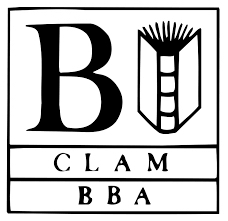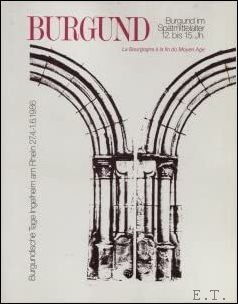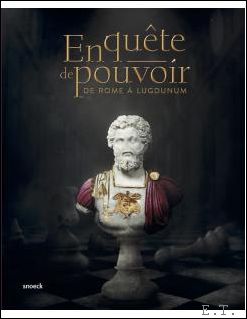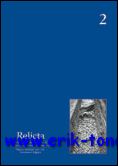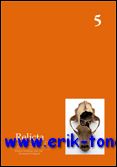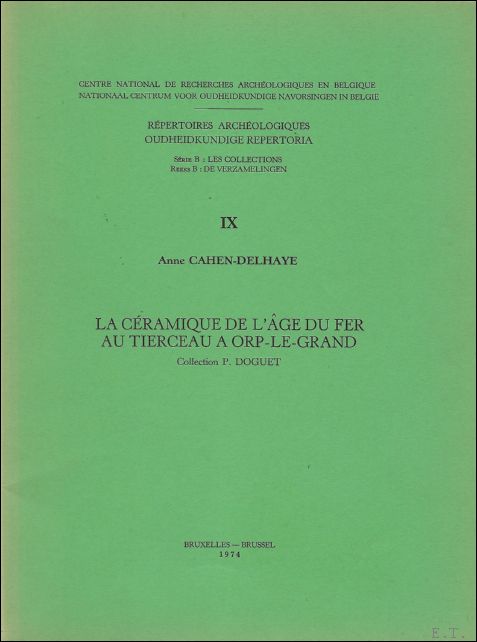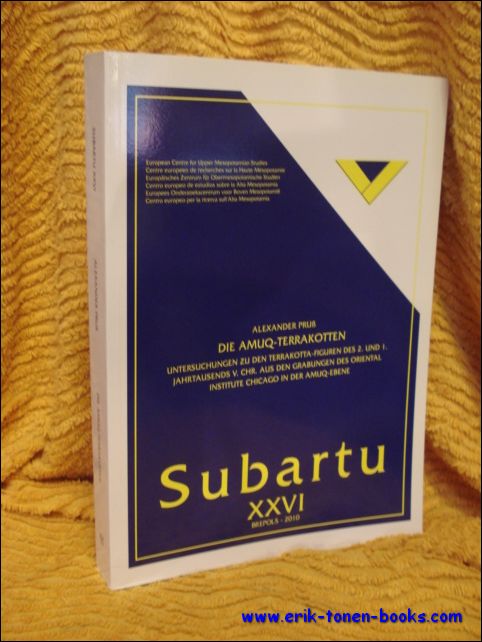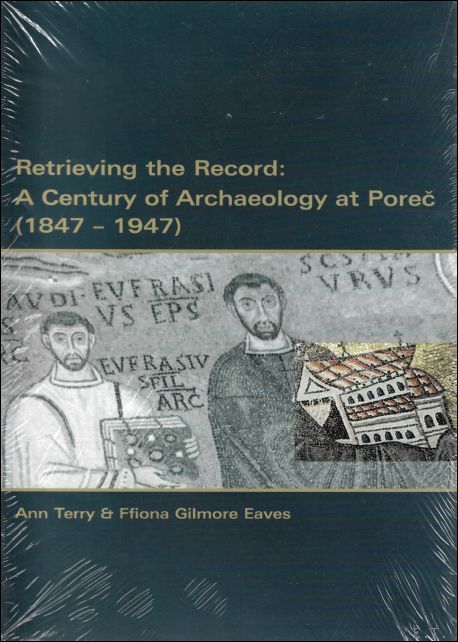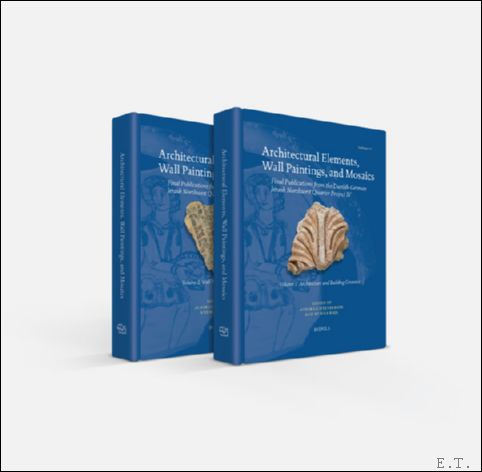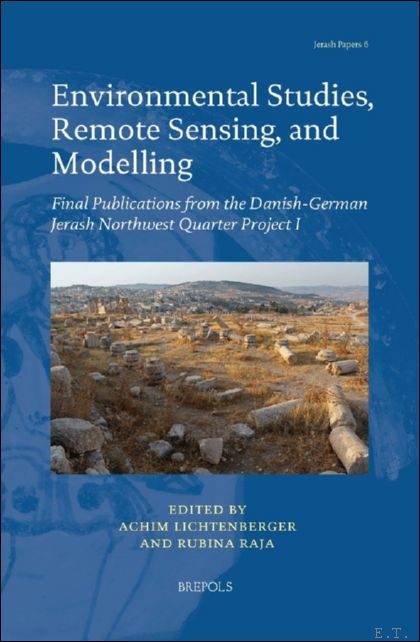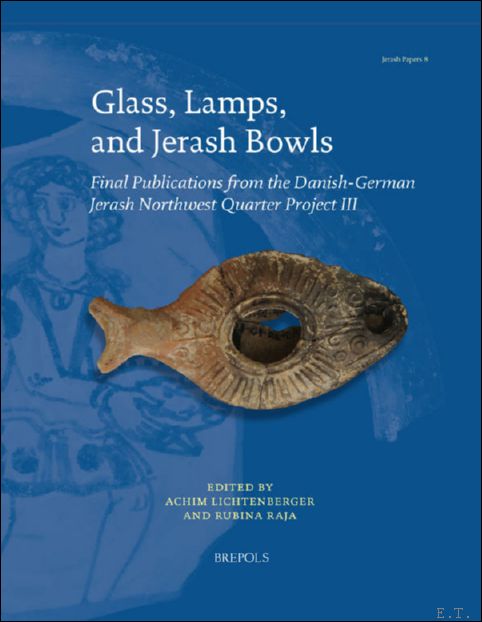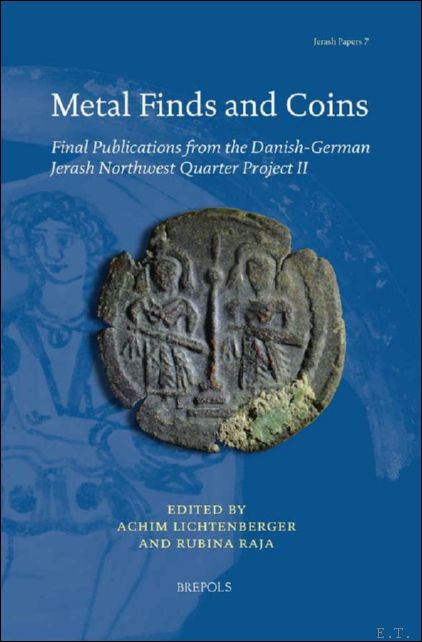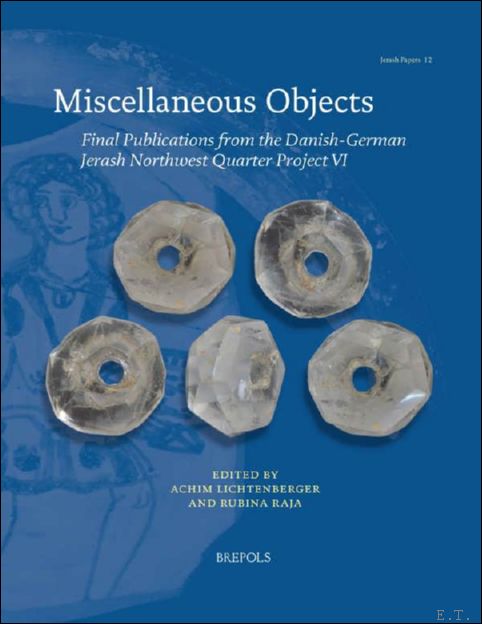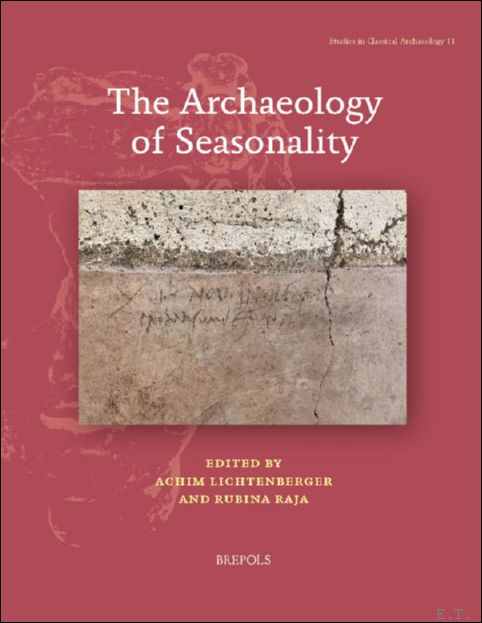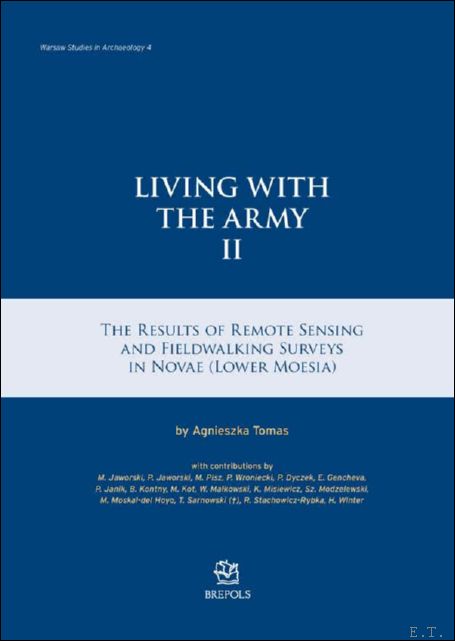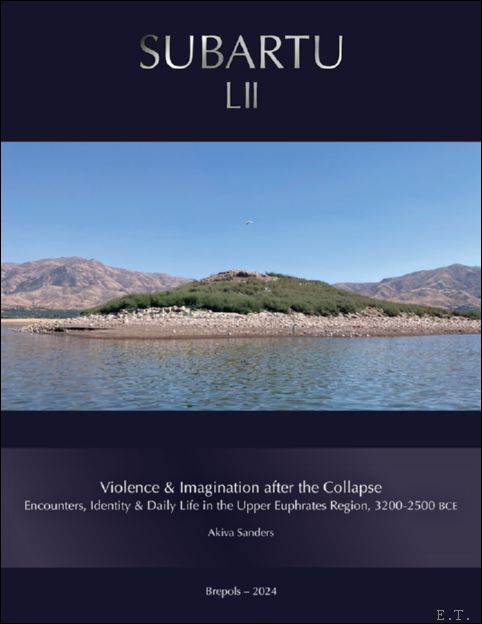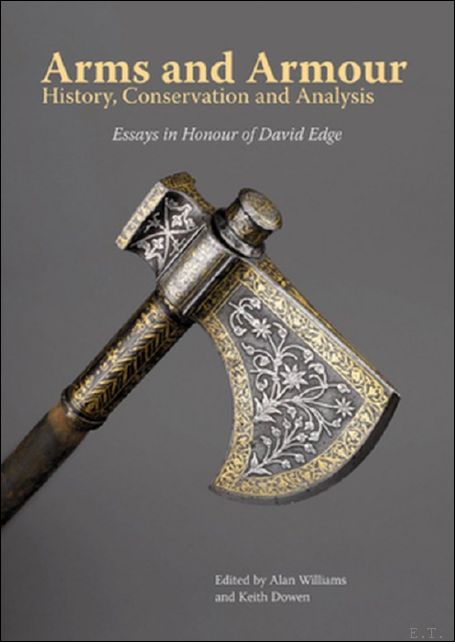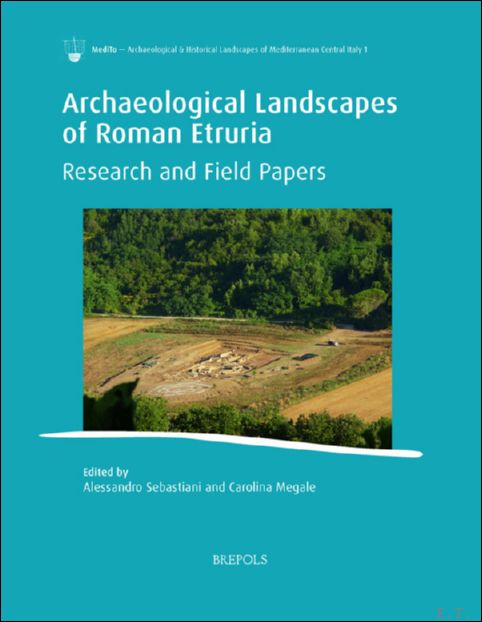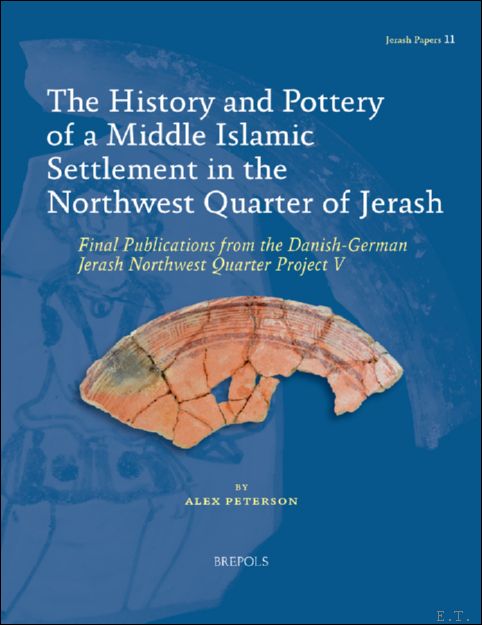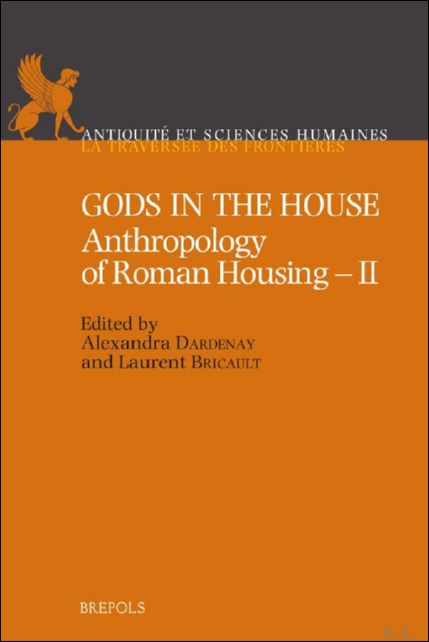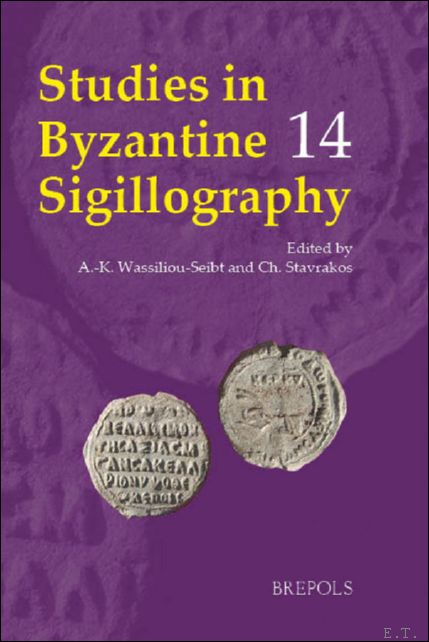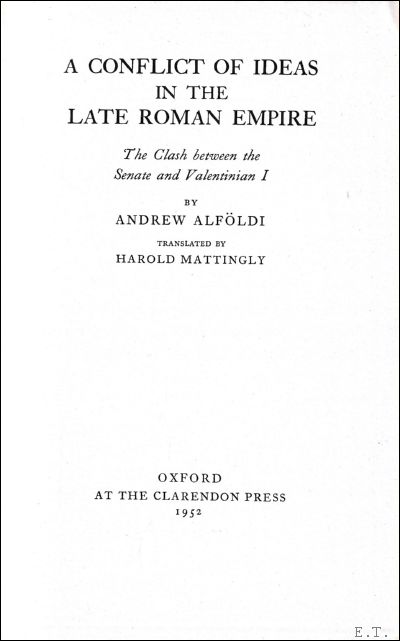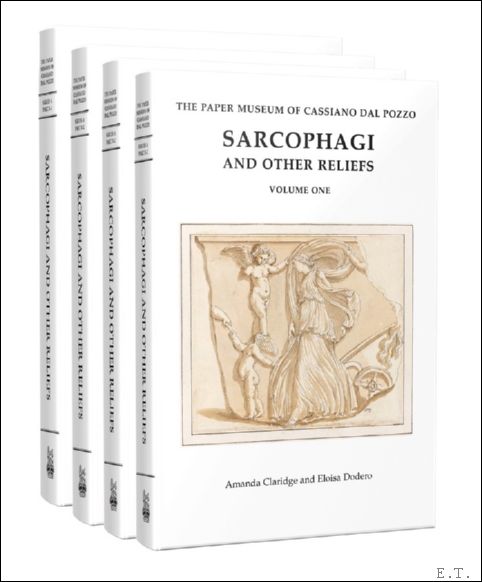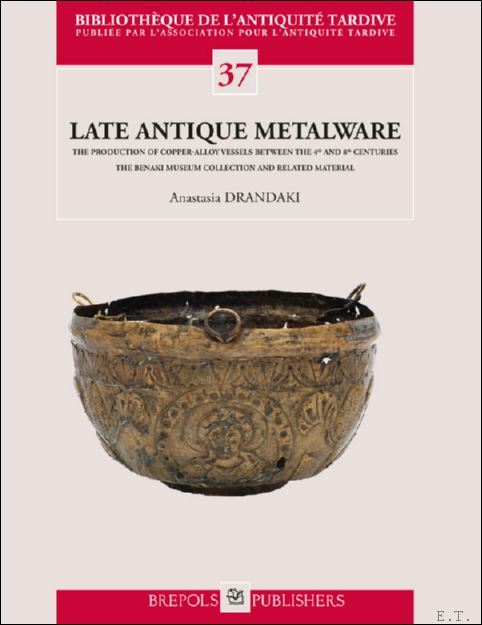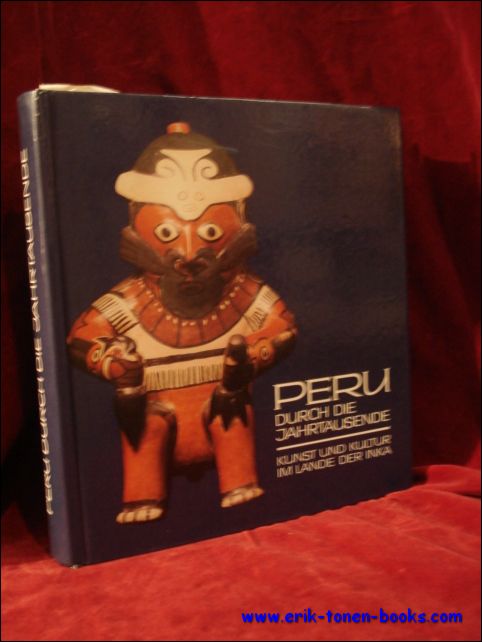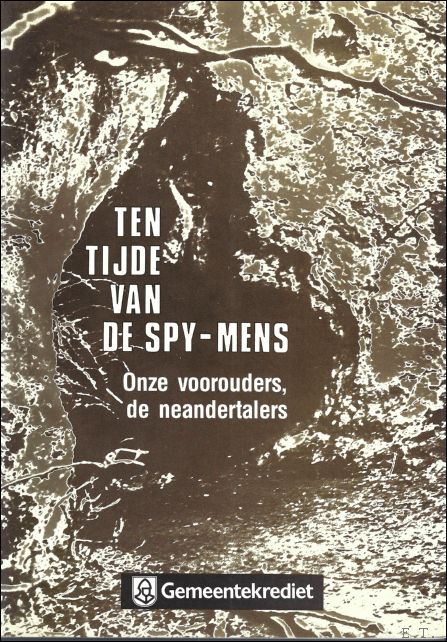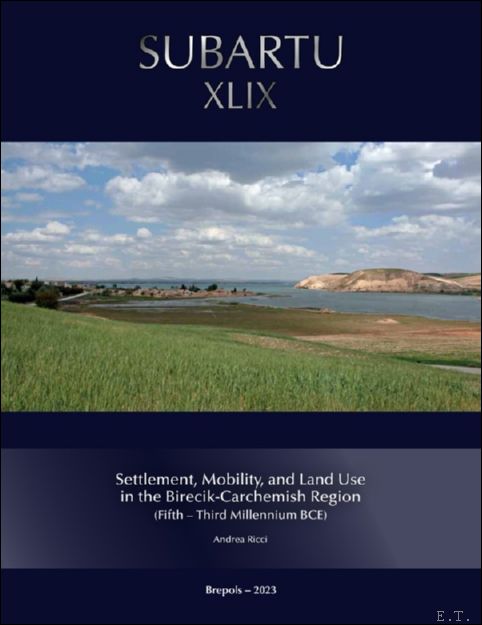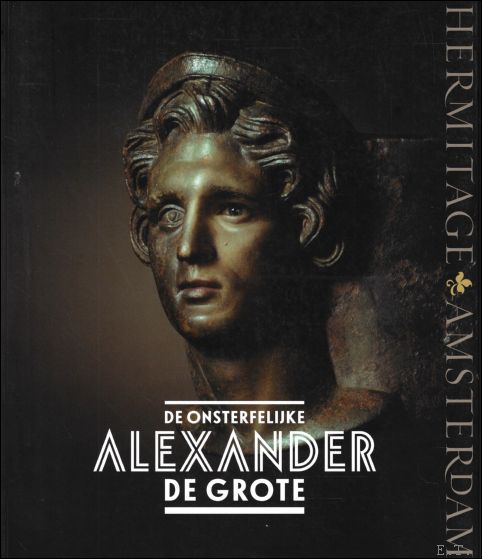Archeologie
627 boeken gevonden
--
Burgund - Burgund im Spätmittelalter 12. bis 15 Jh.
Stadt Ingelheim, 1986. Softcover, 201 pages ill.
Title: Burgund - Burgund im Spätmittelalter 12. bis...
Boeknummer: 60440 | Prijs: EUR 10.00
--
censimento conservativo dei beni artistici e storici, guida alla comilazione delle schede.
Roma, Edizoni quasar, 1993. paperback,185 pp. illustrated. ISBN: 8870970337
regione lazio assessorato alla cultura centro regionale per la documentazione dei beni culturali e ambientali del lazio.
Boeknummer: 22427 | Prijs: EUR 30.00
--
EN QUÊTE DE POUVOIR De Rome à Lugdunum
Snoeck / Musée Lugdunum, 2021. HB, 280 x 230 mm, 224 pages, 320 illustraties, Texte en Francais Exhibition catalogue. ISBN: 9789461616876
Prolongeant les thèmes de l'exposition « EnQuête de pouvoir. De Rome à Lugdunum », ce catalogue montre comment, à la fin du Ier siècle av. J.-C., Auguste a fondé un régime politique original : le Principat. Unique en son genre, celui-ci combine. La restauration des institutions traditionnelles de la res publica avec l'affirmation d'un pouvoir d'essence monarchique détenu par un prince, le premier des citoyens, celui que nous appelons empereur. Le Principat ne prévoit toutefois dans le droit aucun schéma fixe de succession héréditaire, ce qui fait naître le danger d'une guerre civile. L'exemple des affrontements de 193-197, qui suivirent la mort de Commode et s'achevèrent par la bataille de Lyon le 19 février 197, illustre la nécessité pour l'empereur d'établir un consensus entre les principales couches sociales : armée, Sénat, peuple romain, élites provinciales et chevaliers. Les textes de cet ouvrage, issus de contributions d'historiens et d'archéologues, et nourris des avancées scientifiques les plus récentes, invitent à découvrir les rouages du pouvoir dans l'Empire romain à travers l'analyse des mécanismes de la succession dynastique et de l'usurpation.
Boeknummer: 57290 | Prijs: EUR 30.00
--
Relicta. Archeologie, Monumenten- en Landschapsonderzoek in Vlaanderen .1.
Monumenten- en Landschapsonderzoek, 2007. Bound, 254pp. illustr. color. Formaat A4, vierkleurendruk, fine condition. vol.1
archeologisch onderzoek.
Boeknummer: 21581 | Prijs: EUR 25.00
--
Relicta. Archeologie, Monumenten- en Landschapsonderzoek in Vlaanderen 2.
Monumenten- en Landschapsonderzoek, 2008. Bound, 234pp. illustr. color. Formaat A4, vierkleurendruk, fine condition. vol.2
archeologisch onderzoek.
Boeknummer: 21580 | Prijs: EUR 25.00
--
Relicta. Archeologie, Monumenten- en Landschapsonderzoek in Vlaanderen 3.
Monumenten- en Landschapsonderzoek, 2009. Bound, 331pp. illustr. color. Formaat A4, vierkleurendruk, fine condition. vol.3
archeologisch onderzoek. in Edegem-Buizegem.aan de Driekruisenstraat te Tongeren.aan de Mombersstraat te Tongeren.aan de 'de Schaetzengaarde' te Tongeren.van een Gallo-Romeins crematiegraf in Antwerpen.van het Romeinse castellum van Oudenburg.historisch en bouwhistorisch onderzoek van een middeleeuws huis in Oudenaardeindustrieelarcheologisch onderzoek van de Diksmuidse Bloemmolens
Boeknummer: 21579 | Prijs: EUR 25.00
--
Relicta. Archeologie, Monumenten- en Landschapsonderzoek in Vlaanderen 5
Monumenten- en Landschapsonderzoek, 2009. Bound, 287pp. illustr. color. Formaat A4, vierkleurendruk, fine condition. vol.5
De dubbele waterput uit het laat-Romeinse castellum van Oudenburg (prov. West-Vlaanderen): tafonomie, chronologie en interpretatie (Sofie Vanhoutte et al.). Tijdens archeologisch onderzoek van het Romeinse castellum van Oudenburg, door een team onder leiding van VIOE-archeoloog Sofie Vanhoutte (zie ook Relicta 3), kwam een heel opmerkelijke structuur aan het licht: een goed bewaarde ?dubbele? waterput. Dubbel, omdat hij bestaat uit twee vierkante houten bekistingen. De eerste werd gevormd door een constructie van ongeveer 3 bij 3 meter. Later raakte die in onbruik en plaatste men een nieuwe, kleinere bekisting midden in de oude. De vulling van de ruimte tussen beide bekistingen bleek te bestaan uit intentioneel aangelegde lagen van zand, klei en goed bewaard mos. Nadat de kampbewoners ook de tweede waterput hadden opgegeven, gebruikten ze hem nog om afval in te deponeren. De merkwaardige dubbele constructie en haar inhoud werden onderzocht door een internationaal en interdisciplinair team. Met dit uitvoerige artikel worden de resultaten van dat onderzoek op zeer gedetailleerde wijze bekendgemaakt. Een interessante plantenlijst uit 1791 van de Engelse tuinen van kasteel Hex (Heers, Heks, prov. Limburg): een historisch-botanische en cultuurhistorische analyse (Paul Van den Bremt). In het huisarchief van het kasteel van Hex werd een plantenlijst van de verdwenen Engelse tuinen aangetroffen. Het bleek een vrij recente transcriptie te zijn van een document uit 1791. De planten, afkomstig uit alle windstreken, staan erin vermeld met hun toenmalige wetenschappelijke naam en hun Franse soortnaam. In dit artikel bespreekt VIOE-erfgoedonderzoeker Paul Van den Bremt (VIOE) systematisch de 285 nummers, verdeeld over 240 taxa op vier verschillende plekken in de tuin. Ondanks nogal wat fouten van de anonieme kopiist slaagde hij erin de meeste plantensoorten te identificeren. Van elke soort geeft hij de huidige wetenschappelijke naam en bespreekt hij het natuurlijke verspreidingsgebied. De auteur toetste ook de samenstelling van de lijst aan verscheidene contemporaine bronnen. Ook ging hij op zoek naar de oudste vermelding van de soorten in de botanische literatuur, om te achterhalen wanneer zij in de horticultuur geintroduceerd zijn
Boeknummer: 21577 | Prijs: EUR 25.00
--
Spurensicherung Archaologische Denkmalpflege in der Euregio Maas-Rhein
Releves d'empreintes La protection des vestiges archeologiques dans l'Euregio Meuse-Rhin
Speurwerk Archeologische monumentenzorg in de Euregio Maas-Rijn
Aachen, Philipp von Zabern, 1993. softcover, 584pp. ill. ISBN: 3805314108
Speurwerk Archeologische monumentenzorg in de Euregio Maas-Rijn text in DE + FR + NL
Boeknummer: 23903 | Prijs: EUR 20.00
A. CAHEN & VAN BERG;
ARCHAEOLOGIA BELGICA, 221 Un habitat danubien a Blicquy,
Brussel, Studies en verslagen uitgegeven door de Nationale Dienst voor Opgravingen, 1979. Gebrocheerd, 195 x 265mm., 40 pag.
Nr. 221 : Studies en verslagen uitgegeven door de Nationale Dienst voor Opgravingen. In goede staat.
Boeknummer: 17150 | Prijs: EUR 20.00
A. CAHEN-DELHAYE;
ARCHAEOLOGIA BELGICA, Contribution a la chronologie des tombelles ardennaises (Belgique),
Brussel, Studies en verslagen uitgegeven door de Nationale Dienst voor Opgravingen, 1984. Gebrocheerd, 195 x 265mm., 22 pag.
Nr. 257 : Studies en verslagen uitgegeven door de Nationale Dienst voor Opgravingen. In goede staat.
Boeknummer: 17184 | Prijs: EUR 20.00
A. CAHEN-DELHAYE;
Oudheidkundige Repertoria. Repertoires archeologiques. Reeks B: De verzamelingen. Serie B : Les collections. La ceramique de l??™Age du Fer au Tierceau a Orp-Le-grand. Collection P. Doguet,
Brussel, Nationaal Centrum voor Oudheidkundige navorsingen in Belgie / Centre nationale de recherches archeologiques en Belgique, 1974. Paperback, 165 x 255mm., 56 pag.
Reeks B, Nr. IX. In goede staat.
Boeknummer: 17265 | Prijs: EUR 20.00
A. MATTHYS & G. HOSSEY;
ARCHAEOLOGIA BELGICA,215 L'oppidum du Trinchi a Cugnon,
Brussel, Studies en verslagen uitgegeven door de Nationale Dienst voor Opgravingen, 1979. Gebrocheerd, 195 x 265mm., 24 pag. illustre
Nr. 215 : Studies en verslagen uitgegeven door de Nationale Dienst voor Opgravingen. In goede staat.
Boeknummer: 17144 | Prijs: EUR 20.00
A. MATTHYS;
ARCHAEOLOGIA BELGICA, 240 De mote van Kessenich,
Brussel, Studies en verslagen uitgegeven door de Nationale Dienst voor Opgravingen, 1981. Gebrocheerd, 195 x 265mm., 24 pag. ISBN: x
Nr. 240 : Studies en verslagen uitgegeven door de Nationale Dienst voor Opgravingen. In goede staat.
Boeknummer: 17167 | Prijs: EUR 15.00
A. Pruss
Amuq-Terrakotten. Untersuchungen zu den Terrakotta-Figuren des 2. und 1. Jahrtausends v. Chr. aus den Grabungen des Oriental Institute Chicago in der Amuq-Ebene
Brepols, 2010. Paperback, VI 469 p., 639 b/w ill., 210 x 295 mm, 2010. New. ISBN: 9782503535272
This volume presents 569 objects of baked clay from three sites in the Amuq Plain (southern Turkey). They were excavated in the 1930ies by a team from the Oriental Institute of the University of Chicago, directed by Robert J. Braidwood. Most of them were never published before. Their dates range from the late 3rd millennium BC until the Hellenistic period. The terra-cottas are presented in a catalogue, but also set in a frame of their cultural and artistic background. This book is thus not only a publication of material from the Amuq excavations, but also a history of 2nd and 1st millennium terra-cotta production in ancient Syria. The study of these figurines highlights the extent and limitations of iconographic influences from abroad and proves the continuity of images and beliefs across the borders of cultural periods.
Boeknummer: 45673 | Prijs: EUR 110.00
A. Terry, F.G. Eaves;
Retrieving the Record. A Century of Archaeology at Porec (1847-1947),
Turnhout, Brepols, 2003. Paperback, 184 p., 20 loose maps, 200 x 280 mm. ISBN: 9789536002238
"...When considering the present book, one must bear in mind the dispersion of the documentation it considers, largerly unpublished material. After all, one of the most intriguing aspects of research, is the reevalutation of existing documentation. This sometimes rather tedious job becomes, in this case, real detective work. Searches for documents scattered in several countries, in countless archives, and in several languages, turns into a fascinating inquiry into the nature of past research, one that leads to a new understanding of the monument itself." (fomr foreword by Miljenko Jurkovic) "L'extreme complexite du dossier de l'eglise cathedrale de Porec, l'insuffisance des rapports publies, souvent dans des revues peu accesibles, leur dispersion liee a la diversite des intervenants et des administrations, l'importance de certains des documents retrouves justifient amplement la recherche et la publication. Il sera aussi un precieux temoin d'un passe, somme toute prestigieux, de l'archeologie de l'Istrie." (reviewer Noel Duval). Languages : English.
Boeknummer: 37510 | Prijs: EUR 49.00
Achim Lichtenberger, Rubina Raja (eds)
Architectural Elements, Wall Paintings, and Mosaics. Final Publications from the Danish-German Jerash Northwest Quarter Project IV
Brepols, 2022. Paperback, 2 vols, xiv + 446 pages, Size:216 x 280 mm, Illustrations:371 b/w, 842 col., 15 tables b/w., 1 tables col., 3 maps color, Language: English. ISBN: 9782503596662
Summary The Decapolis city of Jerash has long attracted attention from travellers and scholars, due both to the longevity of the site and the remarkable finds uncovered during successive phases of excavation that have taken place from 1902 onwards. Between 2011 and 2016, a Danish-German team, led by the universities of Aarhus and Münster, focused their attention on the Northwest Quarter of Jerash ? the highest point within the walled city ? and this is the fourth in a series of books presenting the team's final results. This two-part set offers a comprehensive presentation of Jerash's rich building heritage from the Late Hellenistic period up to the city's destruction in the mid-eighth century ad through a discussion of architectural elements, together with analysis of the mosaics, wall paintings, and building ceramics excavated from the Northwest Quarter. As well as providing a general overview of the city's changing patterns of habitation, the contributions gathered here also include close case- studies and object biographies that shed new light on the intense use, reuse, and recycling of materials that testify to evolving urban practices and optimization of resources across the Roman, Byzantine, and Islamic periods. TABLE OF CONTENTS Volume 1: Architecture and Building Ceramics Contextualizing Finds from Complex Urban Archaeological Contexts: Methodological Considerations on the Architectural Elements, Building Materials, and Mosaics from the Northwest Quarter (2011-2016) ? ACHIM LICHTENBERGER AND RUBINA RAJA Architectural Elements from the Northwest Quarter of Jerash ? PATRIC-ALEXANDER KREUZ Byzantine Interior Decorational Elements from the Northwest Quarter ? ACHIM LICHTENBERGER AND RUBINA RAJA A Monumental Architectural Limestone Block with Altar Iconography ? ACHIM LICHTENBERGER AND RUBINA RAJA Ceramic Building Materials from the Northwest Quarter ? PHILIP EBELING An Archaeo-Scientific Analysis of Building Ceramics from the Northwest Quarter ? PHILIP EBELING AND GRY H. BARFOD 'Misfired' Ceramic Tegulae from the Northwest Quarter ? GRY H. BARFOD, PHILIP EBELING, AND CHARLES E. LESHER Volume 2: Wall Paintings and Mosaics Wall Paintings from the Northwest Quarter of Jerash: Roman to Middle Islamic Periods ? KRISTINE DAMGAARD THOMSEN The Colour Palette of the Northwest Quarter: Geochemical Evidence from Pigments Used on Roman and Early Islamic Wall Decorations ? GRY H. BARFOD The Mosaics: In-situ Floors and Fragments in Jerash ? WILLIAM T. WOOTTON Mosaic Glass Tesserae from the Northwest Quarter of Jerash ? CRISTINA BOSCHETTI AND WILLIAM T. WOOTTON About the Authors
Boeknummer: 64890 | Prijs: EUR 150.00
Achim Lichtenberger, Rubina Raja (eds)
Environmental Studies, Remote Sensing, and Modelling. Final Publications from the Danish-German Jerash Northwest Quarter Project I
Brepols, 2020. Hardback, xiv + 247 pages, Size:156 x 234 mm, Illustrations:80 b/w, 4 col., 19 tables b/w., Language: English. ISBN: 9782503588865
Summary The Decapolis city of Jerash has long attracted attention from travellers and scholars, due both to the longevity of the site and the remarkable finds uncovered during successive phases of excavation that have taken place from 1902 onwards. Between 2011 and 2016, a Danish-German team, led by the universities of Aarhus and Münster, focused their attention on the Northwest Quarter of Jerash - the highest point within the walled city - and this volume is the first in a series of books presenting the team's final results. Covering different themes and categories of finds, this volume focuses on the geophysical survey and other remote-sensing work undertaken in and around the Northwest Quarter, and also presents an in-depth discussion of the environmental studies performed at the site. This includes the geoscientific analysis carried out in various contexts, as well as radiocarbon dating, studies of both human and animal bones, and conclusions drawn from the archaeobotanical research. TABLE OF CONTENTS List of Illustrations 1. A New Perspective on Gerasa/Jerash through the Findings of the Danish-German Jerash Northwest Quarter Project: The Final Publications of the Danish-German Jerash Northwest Quarter Project (2011-2016) - ACHIM LICHTENBERGER AND RUBINA RAJA Environmental Studies 2. The Geology of the Northwest Quarter of Ancient Jerash within its Regional Context - GENEVIEVE HOLDRIDGE 3. Soils, Sediments, and Urban History of the Ancient City Jerash - GENEVIEVE HOLDRIDGE, SØREN?M. KRISTIANSEN, ACHIM LICHTENBERGER, RUBINA RAJA, AND IAN?A. SIMPSON 4. Olives, Vines, Pulses, and Cereals: Evidence of the Plant Food Economy from the Northwest Quarter of Jerash - METTE MARIE HALD 5. The Faunal Remains from the Northwest Quarter in Jerash - PERNILLE BANGSGAARD 6. Human Remains from the Northwest Quarter in Jerash - MARIE LOUISE S. JØRKOV 7. Dating the Undatable: Pre-Treatment and Radiocarbon Dating of Human Bones with Extremely Low Collagen Preservation from Jerash - BENTE PHILIPPSEN AND JESPER OLSEN Remote Sensing and Modelling 8. Mapping Jerash by Remote Sensing - SØREN?M. KRISTIANSEN AND DAVID STOTT 9. Geophysical Data and Archaeological Evidence: A?Comparative Interpretation - RUDOLF KNIEß, ACHIM LICHTENBERGER, DANA PILZ, AND RUBINA RAJA 10. Radiocarbon Dating and Bayesian Modelling - BENTE PHILIPPSEN AND JESPER OLSEN
Boeknummer: 65534 | Prijs: EUR 70.00
Achim Lichtenberger, Rubina Raja (eds)
Glass, Lamps, and Jerash Bowls. Final Publications from the Danish-German Jerash Northwest Quarter Project III
Brepols, 2021. Paperback, xii + 248 pages, Size:216 x 280 mm, Illustrations:102 b/w, 77 col., 3 tables b/w., 10 maps b/w, Language: English. ISBN: 9782503589374
Summary The Decapolis city of Jerash has long attracted attention from travellers and scholars, due both to the longevity of the site and the remarkable finds uncovered during successive phases of excavation that have taken place from 1902 onwards. Between 2011 and 2016, a Danish-German team, led by the universities of Aarhus and Münster, focused their attention on the Northwest Quarter of Jerash - the highest point within the walled city - and this volume is the third in a series of books presenting the team's final results. The contributions gathered together in this volume provide an in-depth analysis of the glass finds, the lamps, and the iconography of the Jerash bowls discovered in the Northwest Quarter during the excavations. Together, these chapters provide both general overviews and more detailed insights into these important groups of material evidence, and also examine their stratigraphic contextualization and chronological spread across the centuries. TABLE OF CONTENTS List of Illustrations Glass, Lamps, and Jerash Bowls: The Finds from the Danish-German Jerash Northwest Quarter Project's Excavation Campaigns 2012-2016 - ACHIM LICHTENBERGER AND RUBINA RAJA Part I: Glass The Glass Finds from the Northwest Quarter of Jerash - RUTH E. JACKSON-TAL Part II: Lamps Pottery Oil Lamps from the Northwest Quarter of Jerash - ALEXANDRA USCATESCU Part III: Jerash Bowls Some Notes on the Iconography of the Jerash Bowls from the Northwest Quarter of Jerash - PAMELA BONNEKOH About the Authors
Boeknummer: 65294 | Prijs: EUR 85.00
Achim Lichtenberger, Rubina Raja (eds)
Metal Finds and Coins. Final Publications from the Danish-German Jerash Northwest Quarter Project II
Brepols, 2021. Paperback, xii + 182 pages, Size:216 x 280 mm, Illustrations:47 b/w, 19 col., 9 tables b/w., Language: English. ISBN: 9782503588872
Summary The Decapolis city of Jerash has long attracted attention from both travellers and scholars, due both to the longevity of the site, and the remarkable finds uncovered during successive phases of excavation that have taken place from 1902 onwards. Between 2011 and 2016, a Danish-German team, led by the universities of Aarhus and Münster, focused their attention on the Northwest Quarter of Jerash - the highest point within the walled city - and this volume is the second in a series of books presenting the team's final results. This volume offers an in-depth analysis of the coins and metal remains found in Jerash during the excavations. The contributions gathered here cover the small metal finds from the Northwest Quarter, as well as examining Greek, Roman, Byzantine, and Islamic coins. TABLE OF CONTENTS List of Illustrations List of Abbreviations 1. Preface and Introduction - ACHIM LICHTENBERGER AND RUBINA RAJA Metal Finds 2. Die Metallkleinfunde aus dem Nordwestquartier von Gerasa/Jerash - CHRISTOPH EGER Coins 3. Greek and Roman Coins from the Jerash Northwest Quarter Excavations - ACHIM LICHTENBERGER AND RUBINA RAJA 4. The Coins of the Jerash Northwest Quarter Project and the Umayyad Money Circulation in Jund al-Urdunn - INGRID SCHULZE AND WOLFGANG SCHULZE
Boeknummer: 65495 | Prijs: EUR 80.00
Achim Lichtenberger, Rubina Raja (eds)
Miscellaneous Objects. Final Publications from the Danish-German Jerash Northwest Quarter Project VI
Brepols, 2024. Paperback, x + 232 pages, Size:216 x 280 mm, Illustrations:205 b/w, 204 col., 10 tables b/w., 22 maps b/w, Language: English. ISBN: 9782503607740
Summary The Decapolis city of Jerash has long attracted attention from travellers and scholars, due both to the longevity of the site and the remarkable finds uncovered during successive phases of excavation that have taken place from 1902 onwards. Between 2011 and 2016, a Danish-German team, led by the universities of Aarhus and Münster, focused their attention on the Northwest Quarter of Jerash ? the highest point within the walled city ? and this volume is the sixth in a series of books presenting the team's final results. In this volume, a wide range of miscellaneous items discovered in the Northwest Quarter are presented, ranging from prehistoric lithics to Ottoman pipes. Material finds covered include stone sculpture, utensils, and inscriptions, as well as bone objects, spindle whorls, and bread stamps, while some scientific analyses of jewellery and terracotta figurines complement the studies. These chapters ensure that all finds from the Northwest Quarter ? no matter how small ? are made available to researchers, with the contributions gathered here offering unique new insights into the material groups from Gerasa, later Jerash, and into the lives of the population of the city from a longue durée perspective. TABLE OF CONTENTS List of Figures and Tables 1. Objects in and out of Context from the Northwest Quarter in Gerasa Achim Lichtenberger and Rubina Raja 2. Lithic Artefacts Maysoon al-Nahar 3. Stone Sculpture Achim Lichtenberger and Rubina Raja 4. A Miniature Horned Altar Achim Lichtenberger and Rubina Raja 5. An Oblong Square Gaming Piece - Teetotum(?) Achim Lichtenberger and Rubina Raja 6. Stone Objects Olympia Bobou, Achim Lichtenberger, and Rubina Raja 7. The Inscriptions Found during the Excavation Rudolf Haensch 8. Pottery and Tile Fragments with Greek and Latin Writing Jonas Schüren 9. A Magical Ringstone to Attract Women Richard L. Gordon 10. The Jerash Silver Scroll John Møller Larsen 11. Pottery and Plaster Fragments with Semitic Writing and Decoration John Møller Larsen 12. The Jewellery Olympia Bobou and Signe Krag 13. Compositions and Raw Materials of Jewellery from the Northwest Quarter Ingrid Søgaard and Gry H. Barfod 14. Worked Bone, Ivory Objects, and other Faunal Remains Olympia Bobou and Signe Krag 15. Terracotta Figurines Achim Lichtenberger and Rubina Raja 16. Petrographic Analysis of the Terracotta Figurines Carmen Ting 17. Spindle Whorls Olympia Bobou, Achim Lichtenberger, and Rubina Raja 18. Bread Stamps Philip Ebeling 19. Ottoman Pipes Philip Ebeling
Boeknummer: 64226 | Prijs: EUR 125.00
Achim Lichtenberger, Rubina Raja (eds)
The Archaeology of Seasonality
Brepols, 2021. Paperback, xxiv + 431 pages, Size:216 x 280 mm, Illustrations:73 b/w, 148 col., 6 tables b/w., 2 tables col., 4 maps color, Language(s):English, Italian. ISBN: 9782503593951
Summary Seasonality - the passage of time and the change in the environment across the course of a year - is universally recognized as having a major impact on the relationship between people and nature, yet it has rarely been examined as a topic of study in its own right. In the past, many areas of life were constrained and furthered by the cycle of the seasons, from the production of crops and grazing of animals in rural areas, to dress and diet, urban development, and religious activities. This volume offers an in-depth study of the impact of the seasons on the Graeco-Roman world, drawing on the archaeology of seasonality to open up new perspectives into the temporal dimension that underpins human activity, as well as offering fresh insights into space and spatial practices in the ancient world. The contributions draw on a wide range of archaeological evidence to explore the archaeology of the seasons from a number of different perspectives, including economic strategies, catastrophic events, religious activities, iconography, and the role of the individual. Together, they offer a pioneering new approach to classical archaeology that it is hoped will further our understanding of the temporal dimensions to archaeological evidence. TABLE OF CONTENTS List of Illustrations List of Abbreviations Introduction. The Archaeology of Seasonality: Widening Archaeology's Interpretational Framework - ACHIM LICHTENBERGER AND RUBINA RAJA I. Economic Strategies in a Seasonal Perspective Seasonality and Urban Economy: The Case of Gerasa in the Decapolis - ACHIM LICHTENBERGER AND RUBINA RAJA Seasonal Labour and Migratory Work in the Roman Empire - WERNER TIETZ Seasonal Diet in the Mediterranean - ERICA ROWAN Seasonality and the Sea - STEFAN FEUSER The Seasonality of Building Works in the Athenian Epigraphic Evidence - CRISTINA CARUSI Flowers and Faeces: Seasonal Signals from Shivta's Early Islamic Rubbish Middens - DANIEL FUKS, GUY BAR-OZ, YOTAM TEPPER, AND EHUD WEISS To Everything There Is a Season: The Dynamics of Seasonality in the Deserts of the Southern Levant in Ancient Times - STEVEN A. ROSEN II. Seasonality, Time, and Chronology Solar Flare Events and Archaeology - JESPER OLSEN Seasonality and the Calendar in Ovid's Exile Poetry - ANKE WALTER III. Seasonality of Religion Seasonality of Timpone della Motta (Northern Calabria) during the Iron Age and the Archaic Period - JAN KINDBERG JACOBSEN, FELICE LAROCCA, JOOS MELANDER, AND GLORIA MITTICA The Sanctuary of Jupiter Dolichenus at Doliche and the Seasonality of Sacrifice - MICHAEL BLÖMER IV. Seasonality and the Individual Seasonal Dress in the Graeco-Roman World - GLENYS DAVIES Lumen ab Occidente Hiberno: Seasonality in the Pompeian Domestic Bath - CRISTINA M. HERNÁNDEZ Roman Luxury Villas: Environmental Considerations and Seasonal Uses - MANTHA ZARMAKOUPI Maritime Villas and Seasonality - ANNALISA MARZANO* Seasonally Adaptive Design in Roman Public Architecture and Urban Space - EDMUND THOMAS V. Iconography of Seasonality L'iconografia delle Stagioni nella ceramica magnogreca - MONICA BAGGIO Visualizing the Passing of Time: Personifications of Seasons in Greek and Roman Imagery - MARION MEYER Tempora Anni: Time Recurring - DIETRICH BOSCHUNG VI. Seasonal Dimensions of Catastrophic Events Tracing the Season of the Santorini (Thera) Eruption - FELIX HÖFLMAYER The Complicated Problem of Seasonality at Classical Olynthos, Greece - LISA NEVETT New Evidence for the Date of the Eruption of Mt. Vesuvius - MASSIMO OSANNA and CHIARA COMEGNA Pompeian Houses and Seasonality: A Contextual Approach - PENELOPE ALLISON
Boeknummer: 65295 | Prijs: EUR 120.00
Agnieszka Tomas
Living with the Army II. The Results of Remote Sensing and Fieldwalking Surveys in Novae (Lower Moesia)
Brepols, 2023. Paperback, 261 pages, Size:210 x 297 mm, Illustrations:133 b/w, 37 col., 11 tables b/w., Language: English. ISBN: 9782503603995
Summary This book presents the results of a research project realised in 2012-14 in the surroundings of the Roman legionary base at Novae (Moesia inferior), transformed in late Antiquity into a civilian town. The publication also contains material from surveys conducted in 1977 and in 2000, which have so far only been partly published. Various research methods were implemented jointly to enable at least a partial reconstruction of the settlement's character. These included geophysical prospection, field walking, and the mapping of metal finds, supplemented by a series of analyses, such as the testing of plant pollen and macroremains, with the aim of providing as complete a reconstruction as possible of the past environment in the fortress' surroundings. We attempted to record both the finds originating from earlier epochs and those from later ones, in order to provide a more complete reconstruction of the settlement landscape and the character of the site. TABLE OF CONTENTS Introduction and acknowledgments I The site and its surroundings (Agnieszka Tomas) II Introductory remarks on civil settlement near Roman legionary bases and the case of Novae III The present and the past environment (Magdalena Moskal-del Hoyo, Renata Stachowicz-Rybka, Agnieszka Tomas and Hanna Winter) 1. The environment at present (A. Tomas) 2. Palynological study of the samples from the archaeological site at Novae (Hanna Winter) 3. Plant macro-remains from Novae (Renata Stachowicz-Rybka, Magdalena Moskal-del Hoyo) IV Research programme (Piotr Jaworski, Marcin Jaworski, Wies?aw Ma?kowski, Krzysztof Misiewicz, Micha? Pisz, Agnieszka Tomas, and Piotr Wroniecki) 1. The landscape and research limitations (A. Tomas, P. Wroniecki, M. Jaworski) 2. Organization of work and general settings (A. Tomas) 3. Previous non-intrusive investigations at Novae (A. Tomas, M. Pisz) 4. Field walking surveys and documentation of structural remains (A. Tomas) 5. Geophysical prospection methods (P. Wroniecki, M. Jaworski, M. Pisz, K. Misiewicz, W. Ma?kowski) 6. Satellite imagery and aerial photography (M. Pisz) 7. Mapping of metal finds (P. Jaworski) 8. GIS database and spatial analyses (P. Wroniecki) V The results of the prospection (Marcin Jaworski, Wies?aw Ma?kowski, Krzysztof Misiewicz, Micha? Pisz, Agnieszka Tomas, and Piotr Wroniecki) 1. Satellite imagery and aerial photography 2011-14 (Micha? Pisz) 2. Fortifications' measurements, field walking, mapping finds and documentation of structural remains (Agnieszka Tomas) 3. Geophysical measurements (P. Wroniecki, M. Jaworski, M. Pisz, K. Misiewicz, W. Ma?kowski) VI The finds (Piotr Dyczek, Evgenia Gencheva, Pawe? Janik, Bartosz Kontny, Ma?gorzata Kot, Szymon Modzelewski, Magdalena Moskal-del Hoyo, Tadeusz Sarnowski (?), Renata Stachowicz--Rybka, Agnieszka Tomas and Hanna Winter) 1. Stone Age artefacts (Ma?gorzata Kot) 2. Pottery (Agnieszka Tomas) 3. Amphorae (Agnieszka Tomas, Piotr Dyczek) 4. Glass finds and evidence of glass manufacturing (Agnieszka Tomas) 5. Weapons, armour and other equipment (Bartosz Kontny) 6. Jewellery and cosmetic items (Evgenia Gencheva, Agnieszka Tomas) 7. Other metal finds (Szymon Modzelewski) 8. Evidence of local metal processing (Szymon Modzelewski) 9. Roman and Early Byzantine coin finds (Piotr Jaworski) 10. Lead seals (Piotr Jaworski) 11. Epigraphic finds (Agnieszka Tomas) 12. Brick and tile-stamps (Tadeusz Sarnowski (?)) 13. Terracotta and ceramic items (Agnieszka Tomas) 14. Stone finds (Agnieszka Tomas) 15. Medieval and post-Medieval pottery (Pawe? Janik) 16. Medieval coins found at Ostrite Mogili (Piotr Jaworski) 17. Medieval heart-shaped copper alloy find from Ostrite Mogili (Pawe? Janik) VII Summary and conclusions (Agnieszka Tomas) Literature List of figures and tables in the text
Boeknummer: 64332 | Prijs: EUR 75.00
Akiva Sanders
Violence & Imagination after the Collapse. Encounters, Identity & Daily Life in the Upper Euphrates Region, 3200-2500 BCE
Brepols, 2024. Paperback, xviii + 306 pages, Size:216 x 280 mm, Illustrations:210 b/w, 8 col., 12 tables b/w., 5 maps b/w, Language: English. ISBN: 9782503609454
Summary In the late fourth millennium BCE, the villages, temples, and palace of the Upper Euphrates region stood between two social worlds: the comparatively hierarchical, centrally organized Mesopotamian social tradition to the south and the comparatively egalitarian, decentralized Kura-Araxes social tradition to the north. Over the next seven centuries, this positioning and the interactions it sparked fed into reactions among the region's inhabitants that ranged from cataclysmic violence to a flowering of innovation in visual culture and social arrangements. These events had a wide array of short-term and long-term impacts, some limited to a single house or settlement, and some, like the innovation of the Warrior Tomb template, that transformed societies across West Asia. With an eye towards detail, a theoretical approach emphasizing personal motivation, and multiple scales of analysis, this book organizes previously unpublished data from six sites in the region, Arslantepe, Ta kun Mevkii, Pulur, Nor untepe, Tepecik, and Korucutepe, dating to this dramatic and transformative period. TABLE OF CONTENTS List of Illustrations Acknowledgements Introduction Chapter 1. Identities under Construction at the Margins The Problem: Late Chalcolithic Mesopotamia and the Kura-Araxes Cultural Tradition at the End of the Fourth Millennium An Approach to Culture Contact Methodologies for New Research Chapter 2. Setting the Stage: The Late Chalcolithic Background The Local Late Chalcolithic of the Upper Euphrates in Regional Context The Kura-Araxes Cultural Tradition A Comparison of Upper Euphrates LC and Kura-Araxes Visual Culture Signatures Conclusion Chapter 3. The First Moments of Visible Contact: The EB Ia Period Arslantepe Tepecik Conclusions: The Formation of a New Kura-Araxes(-Inspired) Visual Orthodoxy Chapter 4. Isolated Citadels: The EB Ib Period Nor?untepe Tepecik Arslantepe Ta?kun Mevkii Conclusions: The Creation of an Indigenous Visual Counter-Orthodoxy Chapter 5. Accommodation, Innovation, and Diversity: The EB II Period Nor?untepe Tepecik Korucutepe Pulur Arslantepe Conclusions: Innovation and Blending of Visual Templates in a Borderland Region Chapter 6. Legacies of Interactions and Innovations on the Upper Euphrates Legacies of EB I Occupations Legacies of EB II Occupations Conclusions. Evidence, Theory, and Narrative The Nature of Kura-Araxes Identity in the Upper Euphrates Region Violence, Power, and Symbolic Systems Works Cited Appendix 1. Plan Key Detailed Descriptions of Object Types Appendix 2. Object Registers Nor?untepe Tepecik Korucutepe Arslantepe Ta?kun Mevkii Objects
Boeknummer: 64398 | Prijs: EUR 130.00
AKKERMANS, Peter/ RAVEN, Maarten/ HALBERTSMA, Ruud/ BROUWERS, Marijke.
BRONS UIT DE OUDHEID.
Amsterdam, De Bataafsche Leeuw, 1992. Originele uitgeversomslag geillustreerd in kleur, 21x21cm, 94pp, geillustreerd in kleur en z/w. ISBN: 9067072931
Rijksmuseum van Oudheden.
Boeknummer: 1756 | Prijs: EUR 8.00
Alan WilliamsKeith Dowen
Arms and Armour History, Conservation and Analysis
Archetype Publications Ltd, 2021. softcover, 256 pages, 24x17cm. ISBN: 9781909492820
This volume brings together papers written by curators, conservators and scientists who have worked very closely with European and Oriental arms and armour from some of the world?s finest collections. The pieces, which have been examined in detail, include not only those made for royalty, such as the helmet of the Black Prince, the armours of King Henry VIII and the jewel-encrusted dagger of Shah Jahan, but also the apparently more mundane and those created to deceive. Through careful study and hands-on experience, each of the authors provides an eye-opening insight into the history, science and interpretation of these important objects. The essays in this title were written in honour of David Edge. Published by Archetype Publications Ltd in association with the Arms and Armour Society
Boeknummer: 58068 | Prijs: EUR 85.00
Alessandro Sebastiani, Carolina Megale (eds)
Archaeological Landscapes of Roman Etruria. Research and Field Papers
Brepols, 2021. Paperback, 296 pages, Size:216 x 280 mm, Illustrations:95 b/w, 21 col., 3 tables b/w., Language: English. ISBN: 9782503591391
Summary This volume, the first in a new series dedicated to the archaeological and historical landscapes of central Mediterranean Italy, aims to offer a fresh and dynamic new approach to our understanding of central-southern maritime Tuscany during the Roman period. Drawing on research that was initially presented at the first International Mediterranean Tuscan Conference (MediTo) held in Paganico (Grosseto, Italy) in June 2018, and supported by invited papers from other experts in the field, this collection of essays offers the most up-to-date research into Roman and Late Antique landscapes within Tuscany and its broader Mediterranean context, as well as the political, economic, and social networks that developed in this area during the Classical Period. Ultimately, what emerges from this in-depth study of river valleys, urban centres, and coastal settlements is an understanding of a dynamic Roman territory of cities and villages, villas and sanctuaries, minor sites, and manufacturing districts in which the local population fought to establish and maintain connections with the wider Mediterranean. TABLE OF CONTENTS List of Illustrations Preface Introduction - ALESSANDRO SEBASTIANI AND CAROLINA MEGALE The Tuscan Coast in the Classical Period: Research Prospects - FRANCO CAMBI Nunc Villae Grandes, Oppida Parva Prius: Private Agency and Public Utility in the Tuscan Maremma - ELIZABETH FENTRESS Santa Marta: A Roman Nodal Point in the Middle Ombrone Valley (Southern Tuscany, Italy) - STEFANO CAMPANA AND EMANUELE VACCARO Between Topography, Archaeology, and History: Considerations for a Diachronic Synthesis on the Villa at Aiano (San Gimignano) between the Fourth and the Seventh Centuries ad - MARCO CAVALIERI Rusellae and its Territory: From the Etruscan to the Roman City - MARIA GRAZIA CELUZZA, MATTEO MILLETTI, AND ANDREA ZIFFERERO The Etruscan Harbours of Vetulonia and the Extent of the Prile Lagoon: First Results of a New Research Project - CAMILLA COLOMBI The Northern Etrurian Coast: The Vada Volaterrana during the Roman Period: New Data to Reconstruct the Ancient Landscape - STEFANO GENOVESI Archaeological Excavations in Vignale (LI): A Lens for Framing the Landscape in Roman Times - ELISABETTA GIORGI Etruscan-Roman Populonia: Recent Research on the Sacred Area of the Acropolis - CYNTHIA MASCIONE The Fortress of Poggio del Molino and Piracy: A Contribution to the Definition of the Late Republican Landscape of Populonia - CAROLINA MEGALE Luna: The Area of Porta Marina between the Republican and the Imperial Periods - SIMONETTA MENCHELLI, PAOLO SANGRISO, ALBERTO CAFARO, STEFANO GENOVESI, SILVIA MARINI, AND ROCCO MARCHESCHI New Excavations in the Etruscan-Roman City of Vetulonia: The Domus dei Dolia - SIMONA RAFANELLI The Università di Firenze at Cosa (2016-2018) - ILARIA ROMEO AND DARIO PANARITI Cosa Excavations: New Interpretative Frameworks - RUSSELL T. SCOTT, ANDREA U. DE GIORGI, RICHARD POSAMENTIR, AND CHRISTINA CHA The Late Etruscan and Republican Settlement at Podere Cannicci: (Civitella Paganico - Grosseto) - ALESSANDRO SEBASTIANI The Missing link: A Nucleated Rural Centre at Podere Marzuolo (Cinigiano - Grosseto) - ASTRID VAN OYEN, GIJS W. TOL, AND RHODORA G. VENNARUCCI Beyond Religion? Placing the Gods in the Reconstruction of the Landscape and Economies of Southern Tuscany - EDOARDO VANNI Rural Settlements and Natural Resources in Early Medieval Southern Tuscany: Past and Future Research Prospects - GIOVANNA BIANCHI
Boeknummer: 65408 | Prijs: EUR 115.00
Alex Peterson
The History and Pottery of a Middle Islamic Settlement in the Northwest Quarter of Jerash. Final Publications from the Danish-German Jerash Northwest Quarter Project V
Brepols, 2023. Paperback, xxviii + 246 pages, Size:216 x 280 mm, Illustrations:331 b/w, 192 col., 3 tables b/w., 10 maps b/w, 1 maps color, Language: English. ISBN: 9782503603353
Summary In 2015, the Danish-German Northwest Quarter Project working in Jerash uncovered a Middle Islamic farmstead. Subsequent excavations revealed that this settlement, far from marking a decline at the site, is in fact indicative of a broader active and dynamic rural community living within the ancient urban landscape of Jerash. This volume offers an in-depth focus on this Islamic settlement, with a particular focus on the ceramic material yielded by the site, which is here fully quantified and contextually analysed alongside historical sources. Through this approach, the author has reconstructed a new synthesis of Middle Islamic settlement history, shedding new light on the economic and social structures of a rural community in northern Jordan, as well as establishing a typology that can be used to refine the chronologies of Middle Islamic Jerash. TABLE OF CONTENTS List of Illustrations Plates Acknowledgements Chapter 1. Introduction Chapter 2. Jerash ??? Chapter 3. Overview of the Pottery from the Northwest Quarter Chapter 4. Contextual Analysis of the Middle Islamic Ceramics Chapter 5. Developing the Middle Islamic Ceramic Typology for Jerash and Examining it within its Wider Regional Context Chapter 6. Conclusion Catalogue of Middle Islamic Ceramics from the Northwest Quarter of Jerash Handmade Geometric Painted Ware Plain Unpainted Handmade Ware Cooking Vessels Glazed Ware Vessels Wheelmade Vessels Miscellaneous Objects Works Cited Index
Boeknummer: 63352 | Prijs: EUR 120.00
Alexandra Dardenay, Laurent Bricault (eds)
Gods in the House. Anthropology of Roman Housing - II
Brepols, 2023. Paperback, 368 pages, Size:156 x 234 mm, Illustrations:39 b/w, 80 col., 4 tables b/w., Language(s):English, French. ISBN: 9782503601694
Summary The archaeological excavations conducted from one end of the Mediterranean zone to the other have illuminated the place of gods in the ritual practices in the dwellings of the Graeco-Roman era. The discovery of multiple artefacts, dedicated spaces, and figurative paintings support new avenues of historical, anthropological, and social reflection with the aim of better understanding domestic religious practices in the polytheistic contexts of antiquity. This collective volume organizes those reflections around three axes. The first axis centres on identifying the deities that were favoured in domestic sanctuaries. Which gods are represented and which are not? The second axis concerns the interrelationships evident within domestic ritual spaces and sanctuaries. The third axis is dedicated to the anthropology of rituals. Lines of inquiry informed by anthropological, social, and phenomenological approaches are assuming ever-greater importance in scholarship on Antiquity. It is from this perspective that the authors explore the role that domestic ritual spaces play in shaping the lived environment. TABLE OF CONTENTS Gods in the House: An Anthropological Approach to Ancient Divinities and Domestic Cults (Alexandra Dardenay & Laurent Bricault) I. Gods of the House Domestic Aphrodite, Goddess of Desire and Seduction (Heather F. Sharpe) Dédoublements de divinités dans les laraires romains : polymorphie des images et multiplicité des champs d'action (Nicolas Amoroso) Honorer Mithra en contexte résidentiel. Réflexions à partire des exemples de Rome et d'Ostie (Françoise Van Haeperen) Divine Guests: Religious Identities and Groups of Deities in Roman Domestic Shrines (Carla Sfameni) II. Gods in the House Sacraria ou 'chapelles' religieuses à Pompéi : culte domestique ou vénération publique ? (Eric M. Moormann) Morphologies of sacra privata in the Roman House: Architecture, Furnishings, Cults (Maddalena Bassani) Herculaneum's Insula V Domestic Cult Places: Reflections on Typology, Locations and Fields of Action (Alexandra Dardenay) III. Towards an Anthropological Analysis of Spaces and Rituals Domestic Religion and the Anthropology of Space in the Entrance to the Roman House (Marin Mauger) From Routines to Rituals in Pompeian Houses - How Layout and Image-Objects of Household Shrines Shape Religious Knowledge (Anna-Katharina Rieger) Les pratiques cultuelles dans les villas gallo-romaines du Haut-Empire (Emmanuel Pui) Réflexion sur le devenir et la propriété des sacraria en contexte domestique (Aude Durand) Index rerum Index deorum Index locorum
Boeknummer: 64416 | Prijs: EUR 80.00
Alexandra-Kyriaki Wassiliou-Seibt, Christos Stavrakos (eds)
Studies in Byzantine Sigillography. Volume 14
Brepols, 2023. Paperback, xiv + 188 pages, Size:156 x 234 mm, Illustrations:80 col., 1 maps b/w, Language(s):English, French, German. ISBN: 9782503601274
Summary The present volume contains the papers from the 12th International Symposium of Byzantine Sigillography, held at the State Ermitage Museum in St. Petersburg, May 27-30, 2019. The papers discuss seals as historical sources and archaeological findings, presenting their role in the Byzantine prosopography, administration, historical geography and art history. TABLE OF CONTENTS Collections and Finds Vera Bulgurlu, Seals from the Basilica of St. John the Theologian in Ayasuluk Ioanna Koltsida-Makre - Yorka Nikolaou, Unpublished Byzantine Lead Seals from the Acquisitions of the Athens Numismatic Museum Collections Nikolaos Mastrochristos, Lead Seal of John VIII Palaiologos from Rhodes Christos Stavrakos - Zafeiris Syrras, A Selection of Important Seals from the Private Collection of Zafeiris Syrras History, Prosopography and Administration Andreas Gkoutzioukostas, The Office of oikistikos: A Re-examination of the Sigillary Material and an Unpublished Lead Seal from Konstantinos Kalantzes' Collection Werner Seibt, The Byzantine Eastern Frontier in the 1070s Werner Seibt, Auch der georgische Aristokrat Va??e Lip'arit? emigrierte in der zweiten Hälfte des 11. Jahrhunderts in das Byzantinische Reich Byzantium and Beyond Michael N. Boutyrski, The bulla of Joseph, Metropolitan of Rosia Jean-Claude Cheynet, Les sceaux du bureau du génikon hors des frontières de l'Empire Elena Stepanova - Piotr Gaydukov - Oleg Oleynikov, A Collection of Byzantine Seals from Velikij Novgorod Alexandra-Kyriaki Wassiliou-Seibt - Volker Hilberg, Byzantium and Beyond: Siegel aus Skandinavien Piety Gert Boersema, Sigillographic Evidence for Early Byzantine Jerusalem Pilgrimage Technology and Management Maria Teresa Catalano, Nutzen und Grenzen der RTI-Fotografie am Beispiel von zwei stark beschädigten byzantinischen Bleisiegeln George Kakavas - Niki Katsikosta - Eleni Kontou, Integrated Management of Lead Seals: The Case of the Numismatic Museum, Athens-Greece Index of Proper Names and Terms Index of Iconography Index of Metrical Inscriptions
Boeknummer: 64457 | Prijs: EUR 65.00
Alfoldi, Andrew; Mattingly, Harold [trans]
A Conflict of Ideas in the Late Roman Empire: The Clash between the Senate and Valentinian I.
Oxford at the Clarendon Press, 1952. Bound, green cloth, 151 pages, index No DJ. Boards are otherwise in good condition. Text is clean and free of marks.
Boeknummer: 52460 | Prijs: EUR 20.00
Amanda Claridge, Eloisa Dodero
Sarcophagi and Other Reliefs. 4 volumes
Brepols - Harvey Miller, 2022. Hardback, 4 vols, 1832 pages, Size:220 x 285 mm, Illustrations:190 b/w, 1170 col., Language(s):English, Italian, Latin. ISBN: 9781912554560
Summary The 1,055 drawings catalogued in these four volumes are mainly divided between the Royal Library at Windsor Castle and the Department of Greece and Rome of the British Museum, but are also scattered in other public and private collections across the world. They correspond most closely to Cassiano's definition of the Paper Museum as his attempt to have 'skilled young draughtsmen' draw 'everything good in marbles and bronze which can provide some information about antiquity'. He focused in the first instance on the ancient figurative reliefs which are especially abundant in the city of Rome, carved on marble sarcophagi, tombstones, altars, bases and a wide range of other monuments. The drawings depict both the public reliefs of the city - such as those on the Arch of Constantine or the Column of Marcus Aurelius - and those from the major Roman private collections of the period, including the Aldobrandini, Borghese, Medici, Farnese, Barberini and Giustiniani collections. Cassiano started the project in the 1620s with the intention of publishing the drawings as a series of prints. No printed edition ever came to pass, but the drawings collection expanded with still greater energy in the 1630s, when Pietro Testa and other young artists from the circle of Pietro da Cortona were employed. After Cassiano's death in 1657 the enterprise was carried forward by his younger brother Carlo Antonio, who continued to collect drawings of sarcophagi and reliefs well into the 1680s. Sixteenth century purchases were also made for the collection, including works by Battista Franco and Pirro Ligorio. Four introductory essays explore the context in which the project evolved and discuss the collecting history of the Paper Museum as attested by the mounts and numbering found on many of the drawings. The range of different hands at work are identified, and a detailed survey is provided of the existing albums or the past configurations of others now dismembered.
Boeknummer: 64778 | Prijs: EUR 235.00
Anastasia Drandaki
Late Antique Metalware. The Production of Copper-Alloy Vessels between the 4th and 8th Centuries. The Benaki Museum Collection and Related Material
Brepols, 2021. Paperback, 410 pages, Size:216 x 280 mm, Illustrations:250 col., 5 tables b/w., Languages: English, Greek, French. ISBN: 9782503569413
Summary The book examines the fourth- to eighth-century copper alloy wares in the Benaki Museum, using them as the basis on which a wider debate about the production, circulation and use of copper vessels in Late Antiquity can be built. It is an attempt at a holistic approach to this rich but as yet little studied material. Apart from the necessary typology and dating, the study also includes systematic discussion of questions regarding the alloys used in the manufacture of the copperwares and the techniques employed in their production and decoration. The study of primary sources provided evidence about the late Roman and Medieval Greek terminology associated with each group of objects, as well as interesting information about the distribution of various types of vessels, the context in which they were used and the value their owners placed on them, while also containing useful references to the coppersmiths themselves. Most of the Benaki copperwares were acquired on the Egyptian market and can be connected with the rich local production in the Late Roman and Early Islamic period. Yet the study of these artefacts showed that they have striking similarities with a wide range of archaeological material discovered over an extremely large geographical area, from the Eastern Mediterranean to Italy, Germany, Spain and the UK. The geographical spread of copper alloy wares that follow a parallel development in different parts of the empire and also appear almost contemporaneously in Western European burials reignites the debate on the production centres and subsequent modes of distribution of these artefacts. In turn these issues touch on the long-standing debate on the so-called 'Coptic bronzes' and the actual role of Egypt in the overall production of and trade in these articles in Late Antiquity. TABLE OF CONTENTS Contents Forewords Introduction Part ?. Types of vessels 1. Small bowls 2. Three-footed bowls 3. Footed bowls 4. Bowls with horizontal handles 5. Bowls with long spouts 6. Bowls with moveable handles 7. Bottles and Ewers 8. Ladles 9. Spoons - forks - strainers 10. Buckets 11. Amphoriskoi 12. Flasks 13. Lighting devices 14. Censers Part ?. 15. Technical results 16. Workshops 17. Forms and decoration Conclusions Sommaire Appendix: Catalogue of the copper alloy vessels in the Benaki Museum Byzantine Collection Map Abbreviations - Bibliography Index
Boeknummer: 65468 | Prijs: EUR 85.00
Anders, Ferdinand (red.).
Peru durch die Jahrtausende. Kunst und Kultur im Lande der Inka.
Recklinghausen, Bongers, 1984. Hardbound, 471pp., 23x21cm., ills. in col. and b/w., fine copy.
Exhibitionscatalogue.
Boeknummer: 42419 | Prijs: EUR 10.00
André Leguebe, Daniel Cahen
Ten tijde van de Spy-mens : onze voorouders, de Neandertalers
Gemeentekrediet van België, 1986, 1986. Paperback, 87 pagina's, Nederlands, 295 x 210 mm, boek in goede staat, . ISBN: 9789050660068
Boeknummer: 56768 | Prijs: EUR 15.00
Andrea Polcaro, Juan Ramon Muñiz, Alessandra Caselli (eds)
Jebel al-Mutawwaq. A Fourth Millennium BCE Village and Dolmen Field. Six Years of Spanish?Italian Excavations (2012?2018)
Brepols, 2024. Paperback, xiv + 270 pages, Size:216 x 280 mm, Illustrations:161 b/w, 6 col., 43 tables b/w., 1 maps b/w, Language: English. ISBN: 9782503609393
Summary The Early Bronze Age site of Jebel al-Mutawwaq, located on a hill overlooking the Zarqa River in Jordan, was a thriving centre of population from the second half of the fourth millennium into the third millennium BCE. During this time, the settlement developed both in population and social complexity, undergoing the beginnings of an urbanization process that fundamentally changed the relationship between this community of the Transjordanian Highlands with the surrounding landscape, until it was completely abandoned around 2900 BCE. This volume offers a new assessment of the site by combining data from the first surveys of the site, under a Spanish team led by J. A. Fernandez-Tresguerres, with the new results from six seasons of excavations led by teams from Perugia in Italy, and San Esteban in Spain. In doing so, this work sheds new light on this walled settlement and its huge megalithic necropolises, and offers a fresh understanding of the site. TABLE OF CONTENTS List of Illustrations An Introduction to the Volume ANDREA POLCARO & JUAN RAMON MUÑIZ 1. Jebel al-Mutawwaq: History of Investigations JUAN RAMON MUÑIZ 2. The Historical Framework: EB I in Jordan ANDREA POLCARO 3. The Site of Jebel al-Mutawwaq: Architecture, Settlement Planning, and Space Organization ANDREA POLCARO & JUAN RAMON MUÑIZ 4. The Pottery: Function and Typologies ELOISA CASADEI & JOAQUIM DEL RIO 5. The Lithics: Function and Typologies ALESSANDRA CASELLI 6. Biomolecular Archaeology: Preliminary DNA Analysis of Skeletal Remains from Jebel al-Mutawwaq CHIARA PANICUCCI, SARA SILVESTRINI, GIORGIO GRUPPIONI, DONATA LUISELLI, ELISABETTA CILLI & PATRIZIA SERVENTI 7. The Development of Olive Growing at the Jebel al-Mutawwaq Site: Preliminary Data ALESSIA D'AURIA & GAETANO DI PASQUALE 8. Conclusions: The Importance of the Jebel al-Mutawwaq Settlement at the Beginning of the First Urbanization in the Southern Levant ANDREA POLCARO Works Cited
Boeknummer: 64279 | Prijs: EUR 95.00
Andrea Ricci
Settlement, Mobility, and Land Use in the Birecik-Carchemish Region. (Fifth?Third Millennium BCE)
Brepols - 2023, 2023. Paperback, xvi + 384 pages, Size:216 x 280 mm, Illustrations:227 b/w, 22 col., 10 tables b/w., 14 maps b/w, 25 maps color, Language: English. ISBN: 9782503555089
Summary This volume investigates settlement trajectories and systems of movement in the Birecik-Carchemish sector of the Euphrates River Valley from the fifth to the third millennium BCE. Integrating remote sensing analyses, published data of individual surveys and excavations, and the original results of the ?Land of Carchemish Project', this multi-scalar study shows the significant longevity of settlement choices and the role of small sites in shaping the cultural landscape of the region, both along the Euphrates and in the uplands. Attention is paid to the dynamics behind settlement creation and continuity, while the author also provides a reassessment of the radiocarbon dates from sites in the area of study. TABLE OF CONTENTS List of Illustrations Preface and Acknowledgments 1. Introduction The Geographical and Archaeological Context Data Sources Aims and the Structure of this Book 2. History of Research Early Travellers and First Excavations First Formal Excavations Geoarchaeological Investigations of the 1970s Rescue Surveys and Salvage Excavations The Twenty-First Century 3. Geographical and Environmental Setting A Geographic Introduction Land Use and Modern Environmental Conditions Palaeoclimatic Conditions 4. Methods and Techniques of Investigation Data Recovery Before Fieldwork: Remote Sensing and Cartography The LANDSAT Program CORONA Keyhole (KH) Project Google Earth The GeoEye-1 Project The Shuttle Radar Topography Mission (SRTM) Maps The Use of Remote Sensing Data Data Recovery in the Field Algaze Survey (AS) Karul and Özdo?an Survey (KOS) The Moore and the Sanlaville-Copeland Surveys The McClellan and Porter Survey The Land of Carchemish Project (LCP) Data Recovery in the Field: An Overview Data Integration and Management 5. Chronological Framework Pottery Assemblages from the main Excavated Sequences Horum Höyük (AS 10) Hac?nebi (AS 28) Zeytinli Bahçe (AS 44) Yar?m Höyük (AS 50) Jerablus Tahtani (LCP 22) Shiukh Fawqani (EBSE 1) Shiukh Tahtani (EBSE 2) Tell Amarna (LCP 21) Tell al-?Abr (EBSE 5) Tell Ahmar (EBSE 6) The Radiocarbon Dates Horum Höyük (AS 10) Tilbe? Höyük (AS 14) Hac?nebi (AS 28) Zeytinli Bahçe (AS 44) Yar?m Höyük (AS 50) Jerablus Tahtani (LCP 22) Shiukh Fawqani (EBSE 1) Shiukh Tahtani (EBSE 2) Tell al-?Abr (EBSE 5) Overview of the Survey Ceramic Types and Absolute Dates The Ubaid Period The Late Chalcolithic Period The Early Bronze Age (EBA) Overall Chronological Scheme 6. Settlement Dynamics in the Birecik-Carchemish Region from the Ubaid to the LEBA Period The Ubaid Occupation The Late Chalcolithic Period The Local Late Chalcolithic Occupation (LC 1-2 and LC 3) The Middle and Late Uruk Occupation (LC 4 and LC 5) The Early Bronze Age Period The EEBA Occupation The MEBA Occupation The LEBA Occupation General Settlement Trends in the Birecik-Carchemish Region The Case of Tell Jerablus Tahtani (LCP 22) and its Surroundings 7. Discussion Settlement Stability and Small Nucleated Communities The Role of the Euphrates and Systems of Movements Localizing the Global: Towards a Regional Contextualization of the Uruk Phenomenon A ?Second Urban Revolution' within Increasing Intra- and Inter-regional Competition? 8. Concluding Remarks Scales of Analysis and the Birecik-Carchemish Landscape through Time Future Research Directions Towards Integrated High-Resolution Regional Landscape Studies Works Cited Appendix A. Site Gazetteer Appendix B. Pottery Catalogue Notes Index
Boeknummer: 63160 | Prijs: EUR 90.00
Andreas Rhoby, Ida Toth (eds)
Studies in Byzantine Epigraphy. Volume 1
Brepols, 2023. Paperback, 267 pages, Size:178 x 254 mm, Illustrations:64 b/w, 47 col., Language(s):English, German, Italian. ISBN: 9782503590226
Summary The present, inaugural volume includes selected papers from the two panels dedicated to Byzantine Epigraphy held at the XXIII International Congress of Byzantine Studies in Belgrade, August 2016, and the XV International Congress of Greek and Latin Epigraphy in Vienna, August/September 2017. The papers, as indeed the events for which they were initially produced, celebrate both the progress and the promise of epigraphic research within medieval and early modern scholarship as a whole. TABLE OF CONTENTS Andreas Rhoby - Ida Toth, Byzantine Epigraphy: Whence and Whither? Arkadiy Avdokhin, Space Oddity? A Praepositus Inscribing Power and Appropriating Cityscapes in Theodosian Constantinople Christoph Begass, Der Kaiser als Schutzwall. Epigraphische und topographische Untersuchungen zum Basileios-Epigramm aus Thessaloniki (AP IX 686) und zum spätantiken Kaiserbildnis Salvatore Cosentino, Epigrafia e società nella Sardegna bizantina (VII-XI secolo). Alcune osservazioni Estelle Ingrand-Varenne, Incorporating a Name in an Image and an Image in a Name. Comparison between Byzantine and Latin Traditions Sophia Kalopissi-Verti, Language, Identity, and Otherness in Medieval Greece: The Epigraphic Evidence Denis Kashtanov - Maksim Korobov - Vadim Ponaryadov - Andrey Vinogradov, Greek Letters as scriptura franca: Writing in Local Languages on the Northern Periphery of the Byzantine World Emmanuel Moutafov, Word and Image in the Church of the Ascension in Nesseb?r. The Role of Inscriptions for the Reconstruction of the Iconographic Programme of 1609 Giorgos Pallis, Texts and Their Audiences: some Thoughts on the addressees of Inscriptions in Middle Byzantine Churches in Greece Mustafa H. Sayar (unter Mitarbeit von Andreas Rhoby), Die Mosaikinschrift in Dara/Anastasiupolis aus dem Jahr 514 n. Chr. Anna M. Sitz, An Epigram for the Everyman? Strategies of Commemoration at a Cappadocian Tomb Christos Stavrakos - Dimitrios Liakos, Post-Byzantine Inscriptions, Traditions and Legends: Authentic or Fabricated?
Boeknummer: 64481 | Prijs: EUR 65.00
Angelo Castrorao Barba, Gabriele Castiglia (eds)
Perspectives on Byzantine Archaeology. From Justinian to the Abbasid Age (6th?9th Centuries AD)
Brepols, 2022. Paperback, 251 pages, Size:216 x 280 mm, Illustrations:100 b/w, 5 col., Language: English. ISBN: 9782503596846
Summary From the rule of Justinian (AD 527-AD 565) up to the Islamic conquests in the Byzantine Empire, the lands of the Mediterranean basin underwent significant change from the sixth to the ninth centuries AD. Urban and rural areas were transformed, landscapes altered, and material cultures saw a fundamental shift. But such changes were by no means uniform across the region. From Jordan, Greece, and the Danube, to the Italian peninsula, Sicily, Spain, and the Horn of Africa, the contributions gathered together in this volume explore new advances and perspectives from the field of 'Byzantine' archaeology over the longue durée in order to shed new light on this period. What was the impact of the reconquest of Justinian? What was the impact of Byzantium in archaeological record? What are the archaeological indicators of urban and rural transformations from the sixth to the ninth centuries? Did architecture represent a marker of socio-economic and cultural change within the Byzantine world? By engaging with such key questions, and by drawing on new data from surveys, excavations, material culture, and historical sources, this volume offers new insights into archaeological perspectives on the broader Byzantine world. TABLE OF CONTENTS List of illustrations 1. Shifting Paradigms in a Shifting Background: An Introduction Angelo Castrorao Barba and Gabriele Castiglia Cities 2. Thessaloniki in Transition (Sixth to Ninth Centuries): The transformation of a Late Antique Imperial Metropolis into a Medieval Urban Center Konstantinos T. Raptis 3. Rome ?The Legacy of the Gothic War in the Urban Defensive Systems Lucrezia Spera 4. Ravenna, the Last Capital of the Western Roman Empire Enrico Cirelli Landscapes 5. The Justinian Renaissance in the East: Reality or Illusion? Basema Hamarneh 6. Umm al-Rasas / Kastron Mefa'a (Jordan) along the Limes Arabicus. Transformation and Resilience of a Cultural Landscape between Byzantine and Early Islamic Period Carmelo Pappalardo 7. Settled Lansdscapes in the Late Antique Peloponnese: A Review for a Topographical Reassessment Priscilla Ralli 8. Aquae in the De Aedificiis. Territorial and Administrative Issues in Dacia Ripensis during the Sixth Century Ivan Gargano 9. From Twilight to a New Dawn: Byzantine Southern Italy Paul Arthur 10. The Sicilian countryside during the Byzantine period: Archaeological Perspectives on Settlement Patterns Giuseppe Cacciaguerra and Angelo Castrorao Barba 11. Shaping a Christian Empire: Early Christianity in the Horn of Africa from Alexandria to Byzantium Gabriele Castiglia and Philippe Pergola Material culture 12. The Circulation of Coinage in Two Byzantine Cities: Rome and Naples in Comparison Flavia Marani 13. Movable Churches, or How Byzantium Influenced Hispania: An Archaeological Reflection on a Current Debate María de los Ángeles Utrero Agudo 14. Material Encounters in a Byzantine Setting (Sixth/Seventh to Tenth Centuries AD) Joanita Vroom
Boeknummer: 64507 | Prijs: EUR 85.00
Anna Marie Roos, Vera Keller (eds)
Collective Wisdom. Collecting in the Early Modern Academy
Brepols, 2022. Hardback, 325 pages, Size:178 x 254 mm, Illustrations:51 col., Language: English. ISBN: 9782503588063
Summary This volume analyses how and why members of scholarly societies such as the Royal Society, the Society of Antiquaries of London, and the Leopoldina collected specimens of the natural world, art, and archaeology in the seventeenth and eighteenth centuries. These scholarly societies, founded before knowledge became subspecialised, had many common members. We focus upon how their exploration of natural philosophy, antiquarianism, and medicine were reflected in collecting practice, the organisation of specimens and how knowledge was classified and disseminated. The overall shift from curiosity cabinets with objects playfully crossing the domains of art and nature, to their well-ordered Enlightenment museums is well known. Collective Wisdom analyses the process through which this transformation occurred, and the role of members of these academies in developing new techniques of classifying and organising objects and new uses of these objects for experimental and pedagogical purposes. TABLE OF CONTENTS Vera Keller and Anna Marie Roos, Introduction Kelly J. Whitmer, Putting Play to Work: Collections of Realia and Useful Play in Early Modern Educational Reform Efforts Chantal Grell, Tito Livio Burattini, a Seventeenth-Century Engineer and Egyptologist Georgiana Hedesan, University Reform and Medical Alchemy in Ole Worm's Museum Wormianum (1655) Fabien Krämer, The Curiosi as Collectores: The Publications of the Academia Naturae Curiosorum, c. 1652-1706 Vera Keller, Vernacular Knowledge, Learned Medicine, and Social Technologies in the Leopoldina, 1670-1700, or, How to Publish on Sirens, Dragons, and Basilisks Philip Beeley, 'The Antiquity, Excellence, and use of Musick': Wallis, Wanley, and the Reception of Ancient Greek Music in Late Seventeenth-Century Oxford Julia A. Schmidt-Funke, Urban Fabric and Knowledge of Nature: Physicians as Naturalists in Early Modern Commercial Towns Kim Sloan, Sloane's Antiquities: Providing a 'Body of History' through Beads, Bottles, Brasses and Busts Dustin Frazier Wood, Antiquarian Science and Scientific Antiquarianism at the Spalding Gentlemen's Society Anna Marie Roos, The First Egyptian Society Louisiane Ferlier, Collective Wisdom in the Digital Age: Digitizing Early Modern Collections at the Royal Society
Boeknummer: 64564 | Prijs: EUR 85.00
Anna Trofimova ; Vincent Boele
De onsterfelijke Alexander de Grote : De mythe, de werkelijkheid, zijn reis, zijn erfenis
NL, De Nieuwe Kerk - Hermitage A'dam, 2010. 1. Softcover with flaps, 310 pag. NL.editie; 280 x 240 x 22 mm, in Prima conditie, illustraties in kleur / z/w. ISBN: 9789078653219
Geen vorst uit de oudheid spreekt zo tot de verbeelding als Alexander de Grote (356 v. Chr. - 323 v. Chr., koning vanaf 336 v. Chr.). Vanaf zijn vroege jeugd wist hij de mensen om hem heen te inspireren. Tijdens zijn veldtochten naar het Oosten ging Alexander op zoek naar de oorsprong van Dionysos. Volgens de oude Grieken was die afkomstig uit het exotische Oosten, mogelijk India. Alexander reisde Dionysos na en kwam in contact met vele landen: Egypte, Syrie, Bactrie, Perzie, India en Mongolie. Overal stichtte hij nieuwe hoofdsteden die hij alle Alexandrie noemde. Hij liet een spoor van Griekse cultuur achter: het hellenisme. Zijn naam en faam bleven bestaan, ook na de oudheid. Voor vele Europese, Russische en islamitische vorsten was hij een lichtend voorbeeld. Schilderijen, wandtapijten en toegepaste kunst tonen leven en geschiedenis van Alexander. In de tentoonstelling komen al deze aspecten aan bod, met voorwerpen vanaf de klassieke oudheid tot in de moderne tijd, van westerse en niet-westerse oorsprong
Boeknummer: 25653 | Prijs: EUR 20.00






